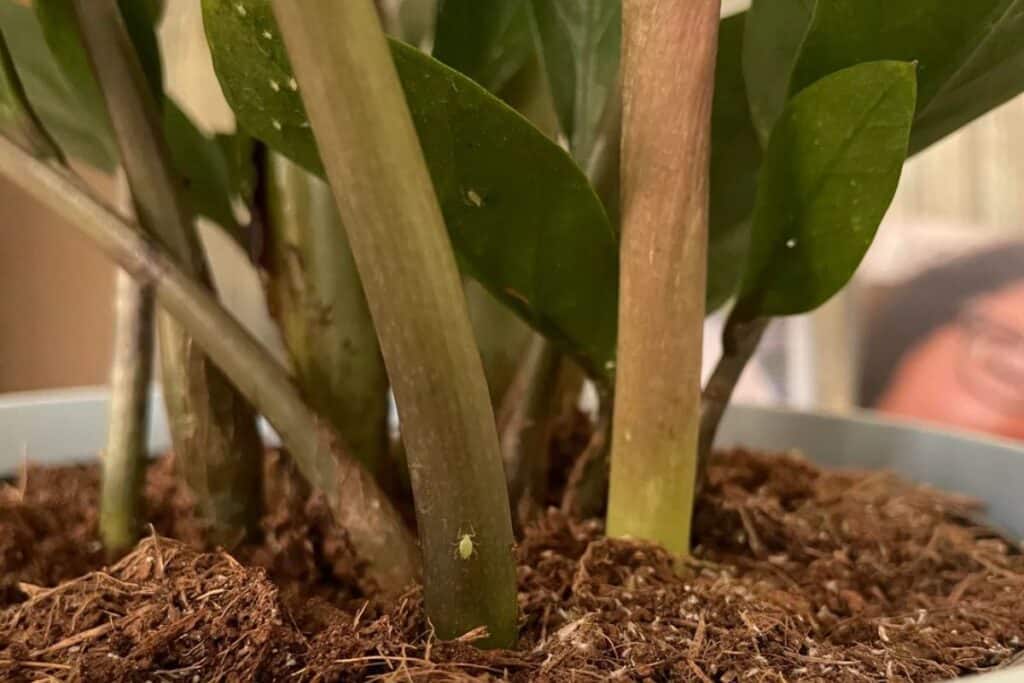Root aphids are sneaky pests that feed underground, causing stunted growth and yellowing leaves. Learn how to identify, treat, and prevent root aphid infestations.

👀 What Are Root Aphids and Why They’re a Problem
Root aphids are small, waxy-bodied insects that feed on plant roots, disrupting nutrient uptake and weakening your plant from the bottom up. Unlike regular aphids, they live in the soil and often go unnoticed until symptoms appear above ground—like yellowing, wilting, or stunted growth.
🔍 How to Spot Root Aphids Early
Root aphids are stealthy and underground. Here’s how to catch them before they cause serious damage:
- Yellowing or curling leaves despite proper watering
- Stunted growth or sudden decline in vigor
- Sticky residue (honeydew) on soil surface or pot rim
- Visible aphids on roots during repotting—look for waxy white or pale green insects
- Ants in the soil—they farm root aphids for honeydew

🧴 Root Aphid Treatment Options That Work
1. Insecticidal Soap (Soil Drench or Spray)
- Breaks down aphids’ waxy coating and kills on contact
- Use as a soil drench or foliar spray depending on infestation level
- Safe for most houseplants when used as directed
- Repeat every 5–7 days until signs disappear
- Avoid direct sunlight after application to prevent leaf burn
2. Hydrogen Peroxide Soil Drench (1:4 ratio with water)
- Kills root aphids and larvae on contact
- Safe for roots when diluted properly
- Use once a week until infestation clears
3. Neem Oil Soil Soak (0.5–1% dilution)
- Disrupts aphid life cycle
- Offers residual protection
- Apply to moist soil and avoid overwatering afterward
4. Repotting with Fresh, Sterile Soil
- Removes most of the population
- Rinse roots gently before replanting
- Disinfect old pots and tools
🧠 Pro Tip:
Root aphids often hide in drainage holes, pot crevices, and root balls. Clean thoroughly and inspect during every repotting session.
🧼 Bonus Tactics for Persistent Infestations
- Use beneficial nematodes (like Steinernema feltiae) to target larvae
- Apply diatomaceous earth to the soil surface
- Isolate infected plants to prevent spread
- Avoid reusing contaminated soil or pots
🚫 How to Prevent Root Aphids Long-Term
- Inspect roots during repotting, especially if growth seems off
- Quarantine new plants and check soil before introducing them
- Avoid overfertilizing—lush root growth attracts pests
- Use sterile soil mixes and clean tools
- Improve drainage to discourage damp, stagnant conditions
🌱 Final Thoughts
Root aphids are the ultimate stealth pests—attacking from below and leaving your plant looking sick with no obvious surface signs. With smart soil care, targeted treatments, and consistent prevention, you can protect your indoor jungle.
